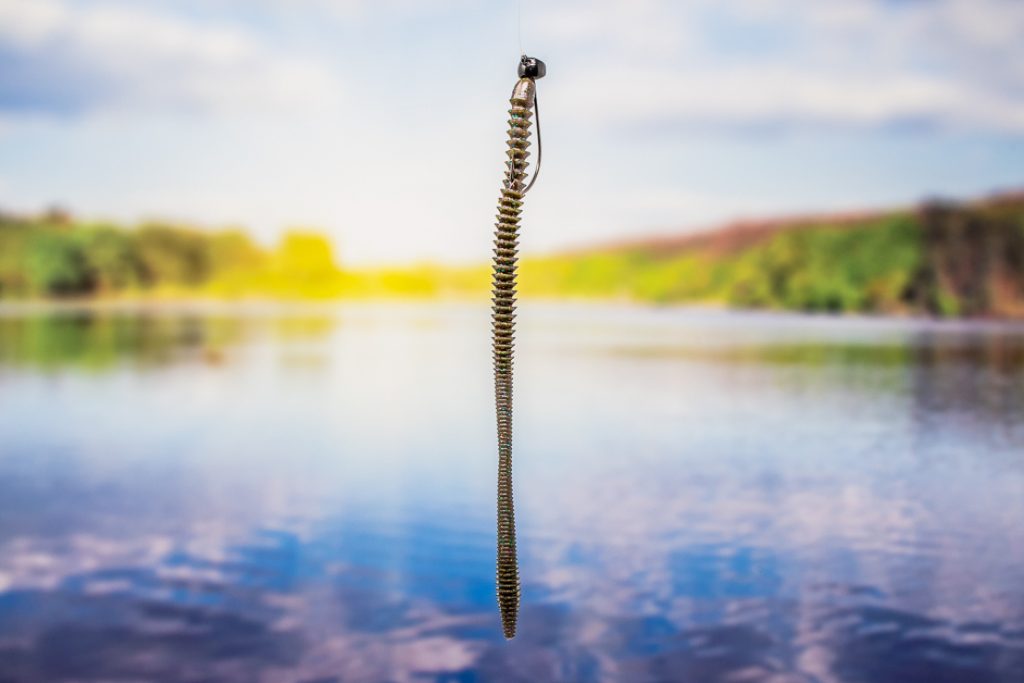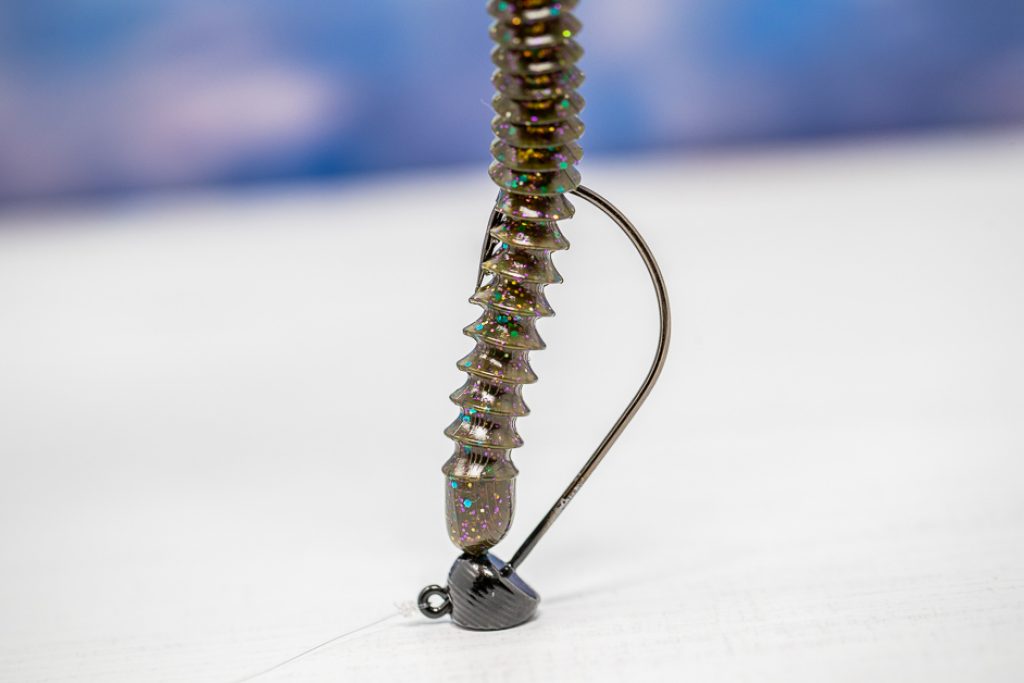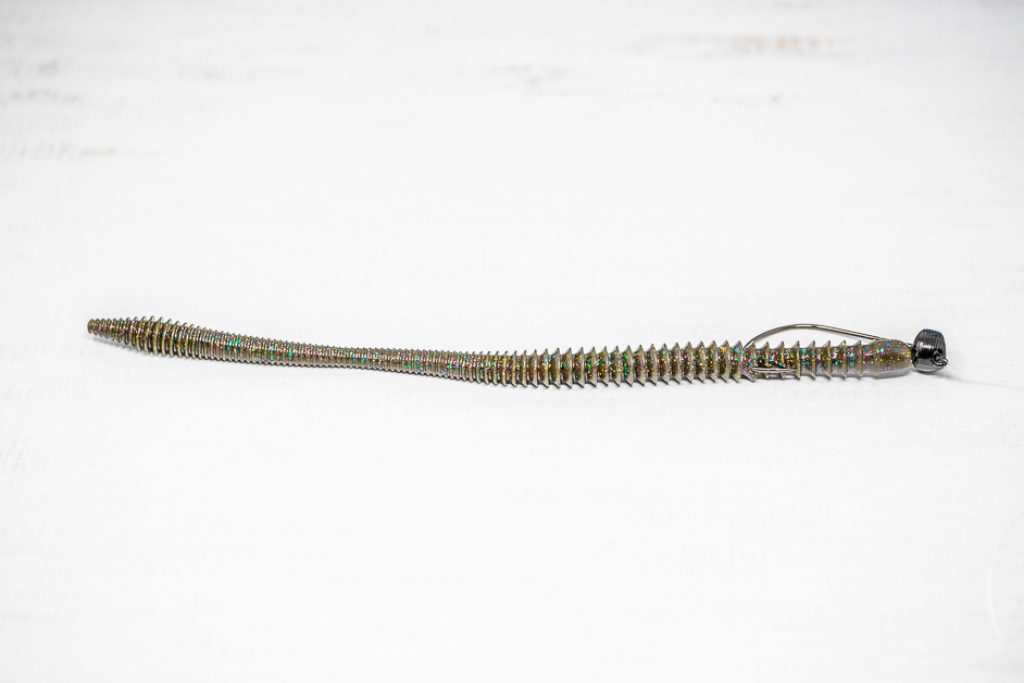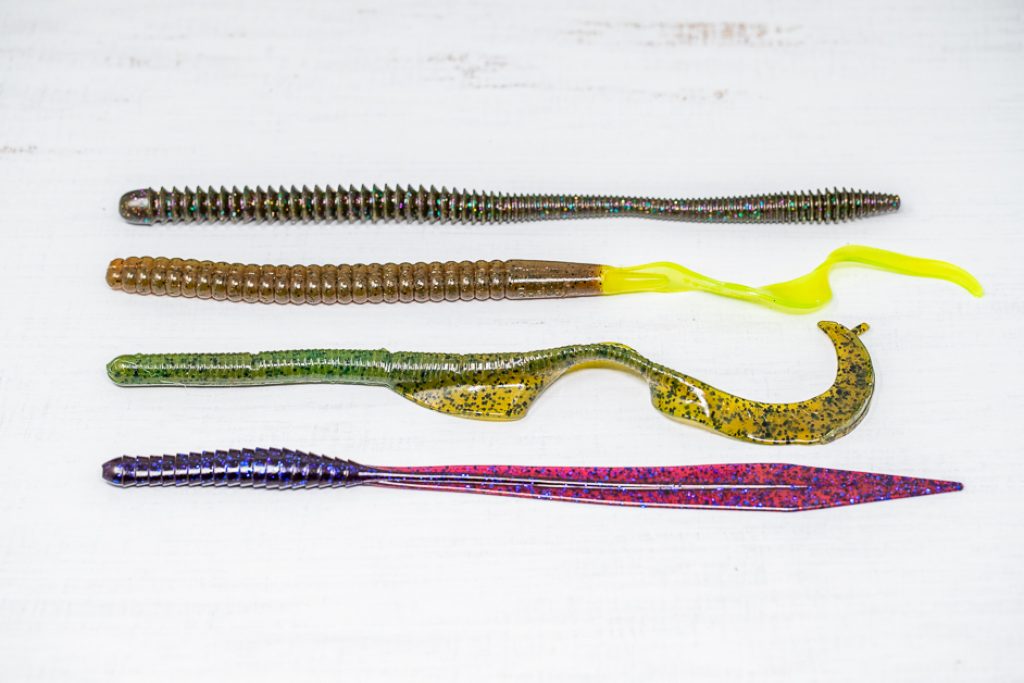If you’re looking to catch more bass, then it’s a good idea to give the bass fish what they want. After all, if they’re attracted to what you’re putting in the water, then you’ll have the opportunity to catch plenty! While there are plenty of different rigs that are useful for fishing bass, there seems to be something pretty special about shaky head rigs. Bass fish respond to those types of rigs in the same way humans would react to $100 bills dangling in the sky.
In this article, we’re going to take a look at everything you need to know about shaky head rigs, including what they are, the setup you’ll need, techniques, the ideal conditions, and the best lure. Take on board the info we provide, and it won’t be long before you’re having plenty of bass fishing success!
What is a Shaky Head Rig
So what is a shaky head, exactly? It’s a lightweight lead head that comes in a variety of sizes, but in general, you’ll find that they’re mostly between 1/16 and ¼ ounce. The small jig head consists of a small thin wire hook that has a bait on the end, which is light plastic and generally a worm or a creature. Part of the strength of the shaky head rig is that they come in a variety of shapes, which makes it versatile; some stand up on the bottom of the water bed, others are best for open bank areas. Shaky head rigs aren’t flashy; if anything, they’re subtle. Measuring around 3 – 5 inches in length, they’re designed to look natural in the water.
If you have the right shaky head rig setup and know some of the best techniques, then you’ll get results. Indeed, people have caught 12 pound bass with these guys!
There are various types of the shaky head rig. The three most common ones are the Round Jig Head, Standup Jig Head, and Weedless Jig Head. Let’s take a closer look at each.
Round Jig Head
The Round Jig Head is best used when you’re fishing in water that has a rocky, gravel bed. It also works well when fishing open banks. It’s the one to use when there’s cover.
Standup Jig Head
For the Standup Jig Head, it’s all in the name. This will stay standing up when it’s at the bottom of the water; this is designed to mimic the small bait fish that feed on the bottom.
Weedless Jig Head
A Weedless Jig Head isn’t its own type of jig — it’s a type of Standup or Round Jig Head. It can be either. It’s just that you’ll use this type when you’re fishing through grass.
Best Shaky Head Rig Setup
You’ll maximize your shaky head success if you have the right rig setup. Indeed, that’s half the battle! Since this is a finesse bass fishing technique, you’ll find that most conditions will work with either a baitcaster or a spinning rod. But what type of rod? You’ll want to find the balance between lightness and strength. Your rod has to be light enough that you can feel all those little bites, but strong enough that you can battle the bass that just doesn’t want to leave the water. A fast action tip will help you, too. We recommend a 7’0 – 7’3″ rod with moderate-fast to fast action and medium power.
For your line, it’s best to go for something light, especially if you’re relatively new to fishing. These lines are clearer and more difficult for the fish to see, and, of course, they’re much easier to manipulate. We recommend a 15-30lb braid line with a 10-20lb fluorocarbon leader.
How to Fish a Shaky Head Rig
There’s more than one way to catch a fish! And this is especially true when you’re using a shaky head rig. It’s true that part of the advantage of using these types of rigs is that they’re so accessible (beginners will succeed in optimal conditions), but you can also have a lot of fun by playing around with the techniques. If you’re not having all that much success when you’re on the water, then switch things up, and see if anything bites.
Here are a number of different techniques you can try.
The Hop
You’ll catch a lot more bass if you’re imitating the small bait fish that they love to eat! The hop is designed to mimic the movement and characteristics of crawdads. And it’s simple to do, too — you just have to let your shaky head rig drop to the bottom of the water. When you’ve made contact, you pull up to make the head “pop” up a few times. Then let it sink back to the bottom. That’s the general motion, but you’ll want to play around a little — you might need to pop it more or less depending on the conditions of the water and the aggressiveness of the bass.
Dead Stick
The dead stick is a good technique when nothing else seems to be working. We’ll be honest and say that it’s not the most exciting fishing technique in the world, but it can be effective! You simply just cast the bait and then…wait. No movement is necessary! The water will give the bait gentle movements, which, should a bass see it, they won’t be able to resist. As we said, it’s not overly exciting, but give it a try if you’re in need — you might discover that you catch more fish by doing less.
Drag It
The drag approach is just what it sounds like. All you need to do is let your bait drop to the bottom of the water, and then drag it in a sweeping motion. It’s as simple as that! The objective is simply to get your bait moving, so you don’t need to worry about shaking or anything like that. If there are fish in the area, then they’ll be enticed by the dragging technique.
Swim It
The swimming technique won’t be your go-to technique with your shaky head rig, but you might want to pull it out of the bag every now and again, either for fun, or when your other methods don’t seem to be working. With the swimming technique, you “swim” your bait close to the bottom of the water (or just about the grass/weeds) if they’re there.
Shake It
And finally, there’s the shaking technique, which is arguably the most popular/common method of using shaky head rigs. After all, the name is close enough! And you can probably get how it works from the name, too. All you need to do is shake the bait when it’s in the water. Remember, however, that you don’t need to shake too much. It should be subtle.
When to Fish a Shaky Head Rig
There’s a good reason why shaky head rigs are so popular. They can be used year-round, in virtually any conditions. Indeed, whether the water is a chilly 35 degrees or a balmy 85, you can always set up a shaky head and get some bites. Of course, as with all types of setups, it’ll work better in some conditions than others. The best conditions for a shaky head is in shallow, clear water.
However, part of the appeal is the versatility. When you’re using rougher conditions, it’s best to go for this rig, as even though you might get fewer bites than when the conditions are peak, you’ll still get more than you would with other types. It’s especially recommended when you’re in a new area, or if you’re teaching your young child how to fish. As we said at the beginning of the article, bass eat this rig up, so you’ll have some success no matter what the conditions are.
The key factor that’ll influence your success is that there are, well, bass in the area. It’s not a rig that you can cover a lot of ground with, so if you’re in an area without bass, you’ll struggle. But it’s nearly always possible to know where bass fish are, so if you stick to those areas, you’ll do fine, even if the fish are inactive. Since they’re predator fish, all it takes is for some movement to indicate the possibility of a meal, and the bass will get moving.
Best Lure for Shaky Head Rig
You’ll maximize your chances of success by using the correct lure. While there are many different types of lure that’ll work well, there is one that stands out: Soft Plastic Keepers! And two types of soft plastic keepers in particular: barbed keepers, and twist lock keepers. With barbed keepers, you’ll find that the fish hook on more strongly. The twist lock keeper is more gentle on baits, which means you won’t go through as many as you would with barked keepers. The hook on can be a little more challenging, but not overly so.
Conclusion
Anyone looking to improve their bass fishing should have shaky head rigs in their tackle box. If there are bass in the area, then you can use them, no matter what the conditions are. Give them a try, have fun, and watch as the number of bass you catch increases.

















